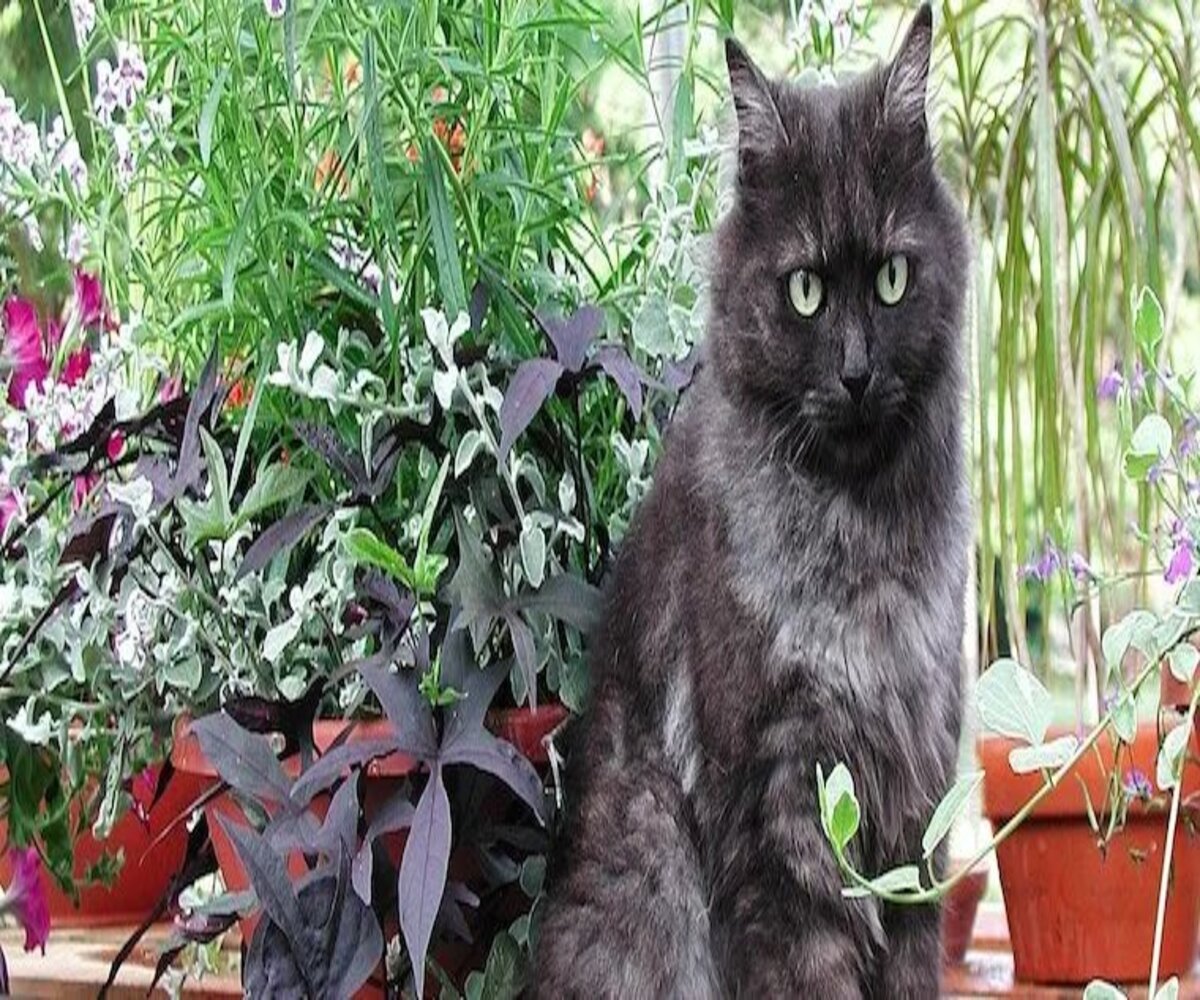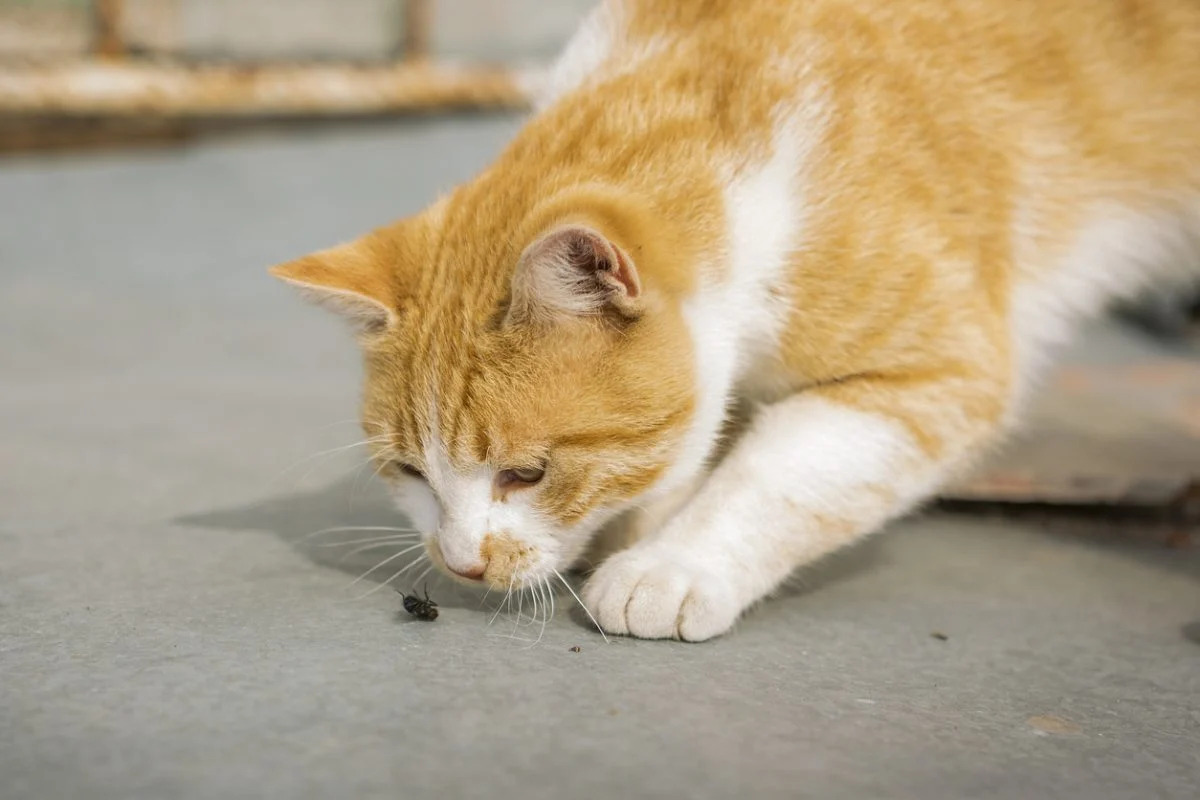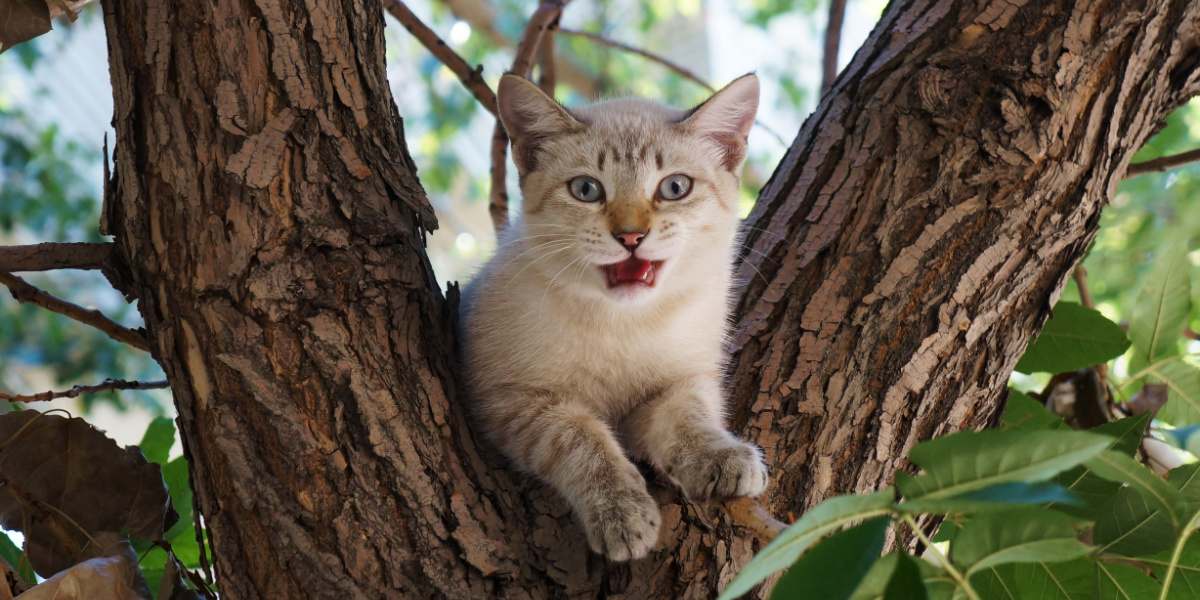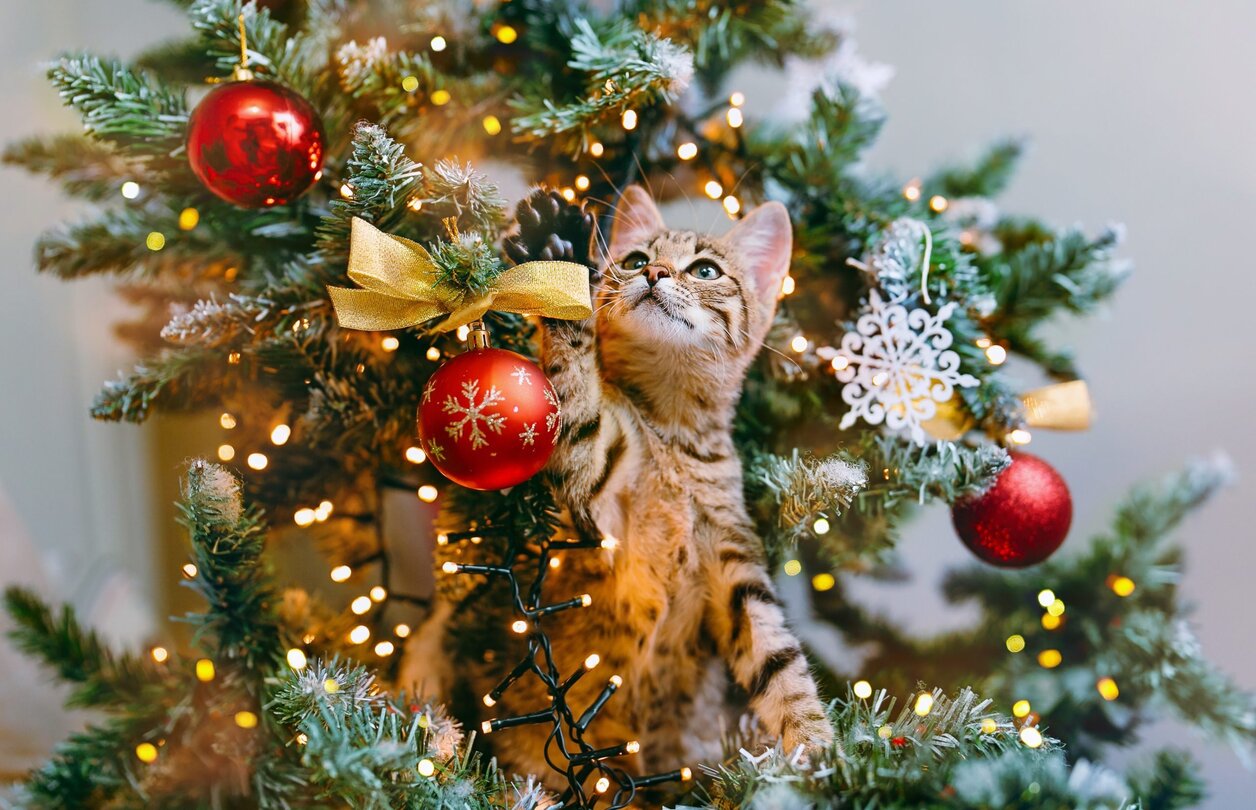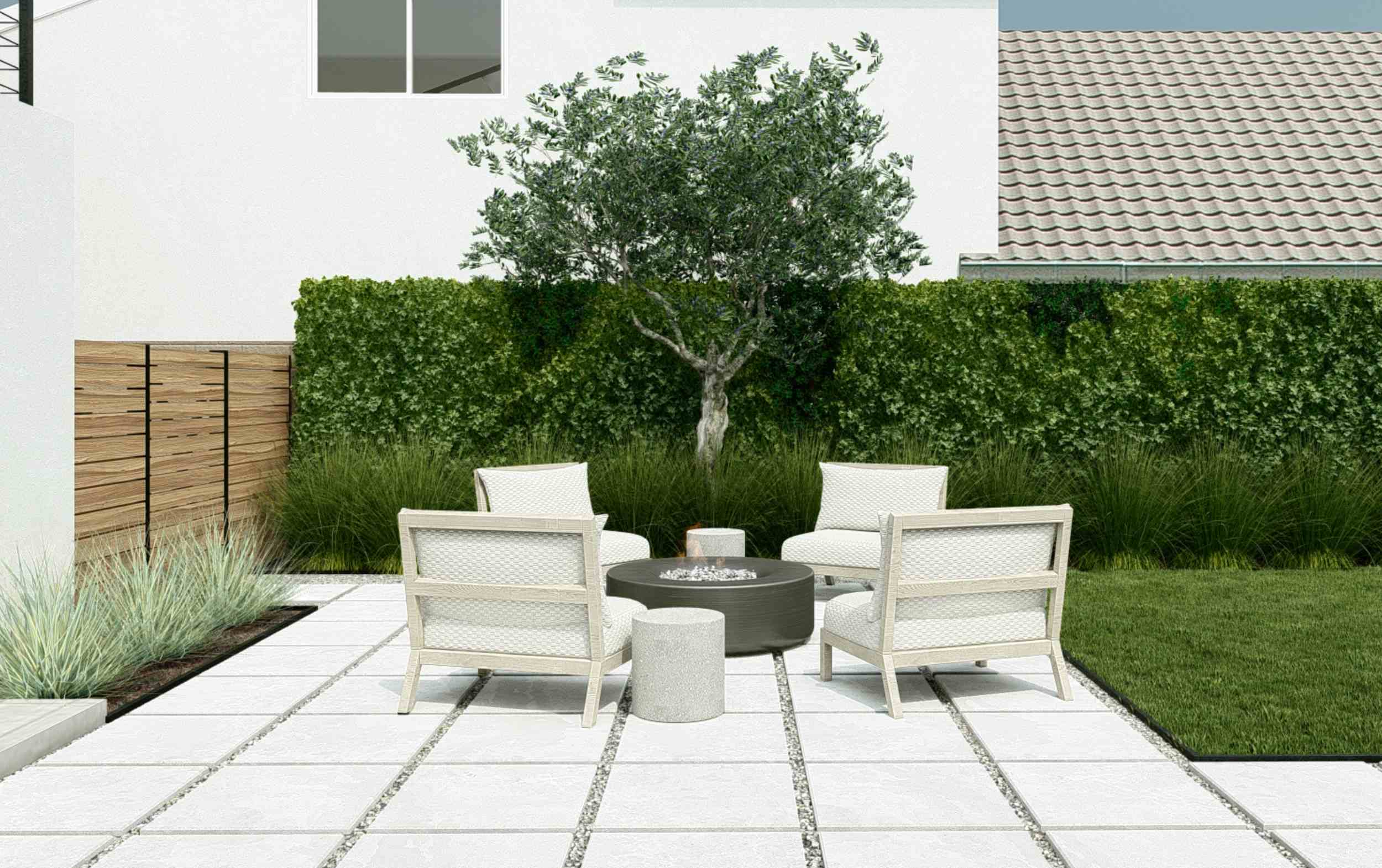Home>Gardening Tips and Tricks>How To Cat Proof Backyard
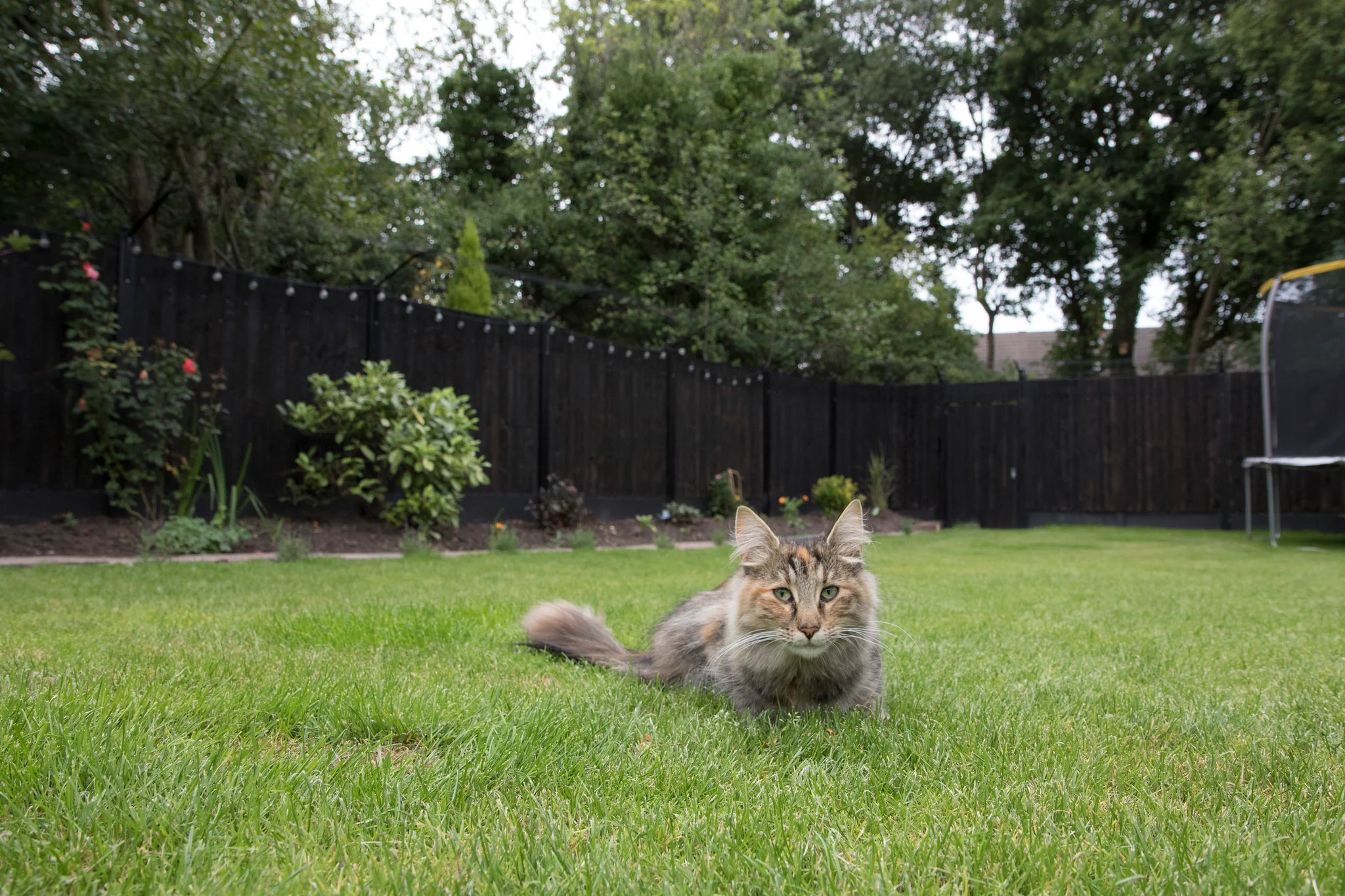

Gardening Tips and Tricks
How To Cat Proof Backyard
Modified: January 22, 2024
Discover effective problem-solving tips to cat-proof your backyard and keep your furry friends safe and secure.
(Many of the links in this article redirect to a specific reviewed product. Your purchase of these products through affiliate links helps to generate commission for Chicagolandgardening.com, at no extra cost. Learn more)
Table of Contents
Introduction
Welcome to the ultimate guide on how to cat-proof your backyard! Whether you’re a cat owner or just concerned about the feline friends in your neighborhood, creating a safe and secure outdoor environment is essential. Cats are naturally curious and adventurous creatures, and they love to explore the great outdoors. However, a backyard can present numerous hazards for our furry companions, from escaping through fences to encountering toxic plants or dangerous water features.
In this comprehensive article, we will walk you through the steps of assessing potential hazards, securing perimeter fences, creating escape-proof enclosures, removing toxic plants, safeguarding water features, minimizing hideouts and crawl spaces, installing cat-friendly features, and implementing motion-activated deterrents. By following these guidelines, you can ensure the safety and well-being of your beloved feline friends.
While the primary focus is on cat owners, the information provided can also benefit those who want to create a safe environment for community cats or stray cats that visit their backyard. With a few adjustments and considerations, you can transform your outdoor space into a cat-friendly haven.
Remember, our goal is to strike a balance between allowing cats to enjoy the outdoors and ensuring their safety. Now, let’s dive into the details and learn how to create a cat-proof backyard!
Assessing Potential Hazards
Before making any changes to your backyard, it’s essential to assess the potential hazards that could endanger your cat’s safety. Take a thorough walk around your outdoor space and keep an eye out for the following:
- Fences and Boundaries: Check the condition of your fences and make sure there are no holes or gaps where your cat could squeeze through. Look for loose boards or wires that could be easily manipulated by a determined feline.
- Plants and Garden: Identify any toxic plants in your garden that could be harmful if ingested by your cat. Common examples include lilies, azaleas, and tulips. Remove or relocate these plants to prevent accidental poisoning.
- Water Features: Take note of any ponds, pools, or other water features in your backyard. Cats are generally good swimmers, but they can still get into trouble if they fall into deep water and can’t find their way out. Ensure there are easy escape routes for your cat or consider fencing off these areas.
- Chemicals and Pesticides: Keep an eye out for any chemicals or pesticides that you may be using in your backyard. These can be toxic to cats if ingested or if they come into contact with them. Store these substances in secure containers and use pet-friendly alternatives whenever possible.
- Hideouts and Crawl Spaces: Look for any small openings or crawl spaces where your cat could potentially get stuck or trapped. Ensure access to these spaces is restricted or blocked to prevent accidents.
By carefully assessing these potential hazards, you can develop a plan to address each one and make your backyard safer for your cat. Remember, prevention is always better than cure, so it’s important to take proactive measures to eliminate or minimize any risks.
Securing Perimeter Fences
One of the most crucial steps in cat-proofing your backyard is ensuring that your perimeter fences are secure and escape-proof. Even the most well-behaved cats can have a wandering spirit and may attempt to explore beyond the boundaries of your property. Here are some tips to help you secure your fences:
- Inspect and repair: Regularly inspect your fence for any damages or weaknesses. Look for loose boards, broken panels, or gaps that your cat could squeeze through. Repair or replace any compromised areas to ensure there are no escape routes.
- Add height: Cats are agile jumpers, so consider increasing the height of your fence to deter them from attempting to scale it. A minimum height of 6 feet is recommended to prevent cats from easily clearing the fence.
- Install cat-proof barriers: Attach cat-proof barriers such as mesh or wire to the top of your fence. This prevents your cat from climbing over and provides an additional deterrent for escape attempts.
- Use inward-facing overhangs: Install inward-facing overhangs or roller bars on the top of your fence to discourage your cat from climbing up and over. These structures create an unstable footing and make it difficult for cats to gain leverage.
- Block potential escape points: Identify any potential escape points, such as trees, nearby structures, or furniture near the fence. Secure these areas or create barriers to prevent your cat from using them as a launching pad to escape.
- Create a secure ground barrier: If your fence has gaps at the bottom, consider burying chicken wire or mesh along the perimeter to prevent your cat from digging under it. Extend the barrier at least 12 inches into the ground to ensure it’s secure.
Remember, cats are agile and resourceful, so it’s important to regularly monitor the effectiveness of your fence security measures. Keep an eye out for any new escape routes they may discover and make necessary adjustments promptly.
Creating Escape-Proof Enclosures
While securing your perimeter fences is crucial, it’s also important to provide an enclosed area within your backyard where your cat can safely enjoy the outdoors. Creating an escape-proof enclosure ensures that your cat can experience fresh air and sunshine while minimizing the risk of them wandering off or encountering dangers. Here are some tips to help you create a secure enclosure:
- Choose the right materials: Select sturdy materials for your enclosure that are difficult for your cat to escape from. Options include wire mesh, metal panels, or reinforced fencing.
- Consider height: The height of the enclosure is essential to prevent cats from jumping or climbing out. Aim for a height of at least 8 feet to deter escape attempts.
- Secure the roof: Cats are skilled climbers and can easily scale walls or fences. Ensure that the enclosure has a secure roof to prevent your cat from climbing out and escaping.
- Eliminate gaps and openings: Regularly inspect the enclosure for any gaps or openings where your cat could squeeze through. Repair or cover these areas to make sure there are no escape routes.
- Create a comfortable environment: Provide your cat with shelter, shade, and comfortable resting spots within the enclosure. This will encourage them to stay within the designated area and discourage escape attempts.
- Add climbing structures: Install cat-friendly structures such as scratching posts, climbing towers, and perches within the enclosure. This will help satisfy your cat’s natural instincts and reduce the desire to explore outside of the enclosure.
- Ensure easy access: Attach secure but easily accessible doors or gates to the enclosure, allowing you to enter and exit without the risk of your cat escaping.
An escape-proof enclosure provides peace of mind, knowing that your cat can enjoy the outdoors safely. It also eliminates the need for constant supervision, allowing your cat to experience the sights, sounds, and smells of nature without the worry of them wandering off or encountering potential dangers.
Removing Toxic Plants
One of the hidden dangers in backyard environments is the presence of toxic plants that can be harmful or even deadly to cats if ingested. To ensure your cat’s safety, it’s important to identify and remove any toxic plants from your yard. Here are some steps to help you with this process:
- Research toxic plants: Familiarize yourself with common plants that are toxic to cats. Some examples include lilies, azaleas, tulips, daffodils, and certain types of ferns. The ASPCA’s website provides a comprehensive list of toxic and non-toxic plants.
- Identify and remove toxic plants: Take a walk around your yard and carefully inspect your plants. If you come across any toxic plants, remove them immediately. Wear gloves during this process to protect yourself from any potential irritants.
- Consider alternative landscaping: If you’re redesigning your backyard or planning new landscaping, opt for cat-friendly plants that are non-toxic and safe for feline companions. Good choices include catnip, cat grass, and various types of herbs.
- Keep indoor plants out of reach: If you have indoor plants, make sure they are placed out of reach from your cats. Consider hanging them or placing them on high shelves to prevent curious kitties from nibbling on them.
- Use barriers or deterrents: If removing certain plants is not an option, create barriers around them or use deterrent sprays specifically designed to discourage cats from approaching or nibbling on the plants. Consult with your veterinarian to find cat-safe products.
By removing toxic plants and replacing them with cat-friendly alternatives, you create a safer environment for your feline friends. Regularly monitor your yard for any new plants that may have sprouted or been introduced by wildlife, ensuring that they are not harmful to your cats.
Safeguarding Water Features
Water features such as ponds, pools, and fountains can be attractive to cats, but they can also pose a significant risk. Cats are generally good swimmers, but accidents can happen, and they may struggle to find their way out of deep water. To ensure the safety of your furry friends, it’s important to take steps to safeguard your water features. Here’s how:
- Fence off the area: The simplest way to keep your cat away from water features is to install a fence around them. Use a sturdy fence or barrier that is tall enough to prevent your cat from jumping over or accessing the water.
- Create an escape route: If you have a pond or pool, make sure there is a designated escape route for your cat to easily get out of the water. This can be in the form of a gently sloping ramp or a floating platform.
- Add a cover: Consider adding a secure cover to your pool or pond when not in use. This prevents cats from accidentally falling in and provides an extra layer of protection.
- Use motion-activated deterrents: Install motion-activated sprinklers or deterrent devices near your water features. These devices will startle your cat with a spray of water if they get too close, discouraging them from approaching the area.
- Provide alternative water sources: Cats are naturally attracted to water, so make sure to provide them with alternative water sources in your yard. Place shallow bowls or pet-friendly water fountains in areas accessible to your cat, encouraging them to stay away from potentially hazardous water features.
- Regularly maintain and monitor: Inspect your water features regularly for any signs of damage, such as cracks or faulty equipment. Promptly repair any issues to prevent accidents and ensure the safety of your cats.
By taking these precautions, you can enjoy the beauty of your water features while keeping your cats safe from potential hazards. Remember, it’s essential to supervise your cats when they are near water features, even with safety measures in place.
Minimizing Hideouts and Crawl Spaces
Cats are masters at finding hiding spots and small crevices to explore. However, hideouts and crawl spaces in your backyard can pose potential dangers, such as becoming trapped or encountering other animals. To minimize these risks, it’s important to identify and address any areas that could potentially become hiding spots for your feline friends. Here are some steps to help you achieve this:
- Inspect your yard: Take a thorough look around your yard and identify any small openings, crawl spaces, or areas where your cat might be inclined to hide. This can include gaps under sheds, decks, or stairs.
- Block access: Use materials such as lattice, wire mesh, or solid panels to block off or seal any potential hiding spots. Ensure that these barriers are secure and not easily removable by your cat.
- Fill in holes: If you have any holes in your yard, fill them in to eliminate potential hideouts. Cats may be tempted to explore these areas and end up getting stuck or injured.
- Seal off crawl spaces: If you have crawl spaces under your house or porch, make sure they are sealed off to prevent your cat from gaining access. Use materials like wire mesh or boards to block off these areas.
- Remove clutter: Clear away any unnecessary clutter or debris in your yard that could serve as hiding spots for your cat. This includes piles of wood, discarded furniture, or dense vegetation.
- Secure outdoor furniture and structures: Cats may seek hiding spots in or around outdoor furniture, sheds, or play structures. Secure these items to prevent your cat from getting trapped or injured by loose or unstable objects.
By minimizing hideouts and crawl spaces, you create a safer environment for your cat to roam freely without the risk of becoming trapped or encountering potential dangers. Regularly inspect your yard and address any new hiding spots that may emerge over time.
Installing Cat-Friendly Features
Creating a cat-friendly backyard goes beyond just ensuring safety; it’s also about providing stimulating and enriching features that cater to your cat’s natural instincts and desires. By installing cat-friendly features, you can enhance your cat’s outdoor experience and create a space they’ll truly enjoy. Here are some ideas to get you started:
- Climbing structures: Install cat trees, scratching posts, or climbing shelves in your backyard. These vertical spaces not only provide exercise and mental stimulation but also allow your cat to survey their territory from above.
- Outdoor perches or shelves: Consider adding outdoor perches or shelves to your fences or the side of your house. These elevated platforms give your cat a designated spot to rest, observe, or bask in the sun.
- Secure outdoor enclosures: If you don’t have a large backyard or if you want to provide additional room for your cat to roam safely, invest in a cat-specific outdoor enclosure. These enclosures can be attached to your house or freestanding structures and provide your cat with a protected space to explore.
- Provide hiding spots: Cats love to have cozy hiding spots where they can retreat and feel safe. Consider placing cat-friendly hiding spots in your backyard, such as igloo beds, covered tunnels, or overturned plant pots.
- Include a sandbox or litter area: Create a dedicated area in your backyard where your cat can dig and bury their waste. This helps keep the rest of your yard clean and encourages regular litter box use.
- Set up interactive toys: Install motion-activated or wind-driven toys that stimulate your cat’s hunting instincts. These toys can provide endless entertainment and encourage your cat to stay within the confines of the backyard.
- Plant cat-friendly vegetation: Consider planting catnip, cat grass, or other safe and non-toxic plants that your cat can interact with and enjoy.
By incorporating these cat-friendly features into your backyard, you provide your feline companion with an enriching outdoor experience that promotes physical activity, mental stimulation, and overall well-being.
Implementing Motion-Activated Deterrents
While we want to create a cat-friendly environment in our backyard, there may be certain areas or situations where we need to discourage our cats from venturing too far or engaging in behavior that could pose risks. Implementing motion-activated deterrents can be an effective way to train your cat to avoid certain areas or behaviors. Here are some options for motion-activated deterrents:
- Sprinkler systems: Motion-activated sprinklers are an excellent way to deter your cat from areas you want to keep them away from. When your cat approaches the designated area, the sprinkler will activate and emit a harmless but startling burst of water.
- Ultrasonic devices: Ultrasonic deterrents emit high-frequency sounds that are unpleasant to cats but not harmful. These devices are triggered by motion and can help discourage your cat from entering certain areas or engaging in undesirable behavior.
- Air sprays: Motion-activated air sprays release a harmless burst of compressed air when triggered. The sudden burst of air startles the cat and can deter them from approaching specific areas or engaging in unwanted behaviors.
- Noise-based deterrents: Certain motion-activated devices produce loud noises that cats find aversive, such as a loud clap or a sudden noise. This instills a negative association with certain areas or behaviors, encouraging your cat to avoid them.
- Motion-activated lights: Motion-activated lights can startle and deter cats, especially if they are triggered by sudden movements. This can be particularly useful for keeping cats away from nocturnal wildlife or preventing them from climbing on certain structures.
When setting up motion-activated deterrents, it’s important to consider your cat’s well-being and not scare or stress them excessively. Test the sensitivity and range of the deterrents to ensure they are effective without causing unnecessary distress. Experimentation and patience are key to finding the right balance and training your cat to respect boundaries.
Remember, motion-activated deterrents should be used as a training tool to guide your cat’s behavior, not as a substitute for proper supervision and training. Positive reinforcement, such as treats and praise, should also be used to reward your cat for desired behaviors in conjunction with these deterrents.
Conclusion
Creating a cat-proof backyard is essential to ensuring the safety and well-being of our feline friends. By taking the time to assess potential hazards, secure perimeter fences, create escape-proof enclosures, remove toxic plants, safeguard water features, minimize hideouts and crawl spaces, install cat-friendly features, and implement motion-activated deterrents, we can provide a secure outdoor environment for our cats to enjoy.
Remember, it’s important to strike a balance between allowing our cats to explore and roam freely while keeping them safe from potential dangers. Regular monitoring and maintenance of the backyard are necessary to address any changes or new hazards that may arise.
By following the guidelines outlined in this article, you can transform your backyard into a cat-friendly haven, providing ample opportunities for exercise, mental stimulation, and relaxation for your beloved feline companions.
So go ahead and start cat-proofing your backyard today. Your cats will thank you for it as they frolic, climb, and explore in a secure and enriching outdoor space.
